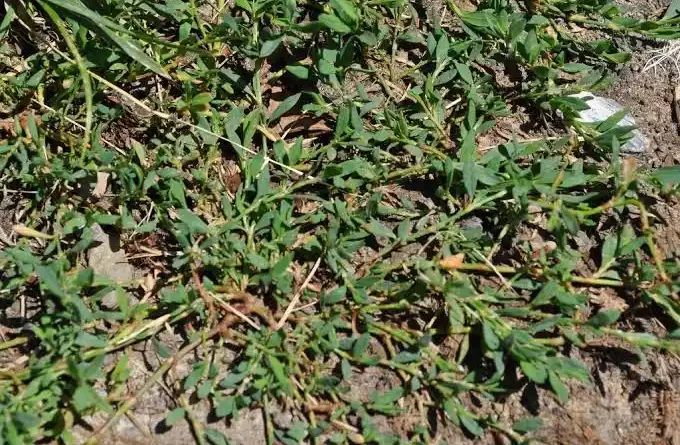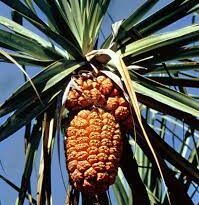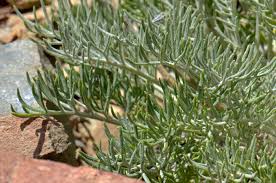17 Medicinal Health Benefits Of Polygonum aviculare (Common Knotgrass)
Polygonum aviculare, commonly known as Common Knotgrass, is a versatile and resilient flowering plant that belongs to the family Polygonaceae. This unassuming herbaceous annual is native to Europe, but its adaptability has allowed it to spread across many continents, earning it a place as a ubiquitous and hardy weed in various ecosystems.
One of the most distinctive features of Polygonum aviculare is its inconspicuous, yet intriguing flowers. The small, greenish to pinkish flowers are clustered in dense, cylindrical spikes at the ends of the stems. These inflorescences may not be showy, but they play a crucial role in the plant’s reproduction.
Each flower possesses five petal-like tepals and is adapted for self-pollination. After successful pollination, Common Knotgrass produces small, triangular seeds, which are an essential part of its life cycle and its capacity to colonize a wide range of habitats.
Distribution of Polygonum aviculare
Polygonum aviculare is an exceptionally adaptable and widespread species, and it can be found in a wide variety of environments across the world.
riginally native to Europe, it has expanded its range significantly and can now be found on nearly every continent. Its success as a cosmopolitan weed is attributed to its ability to thrive in diverse climates, from temperate regions to arid deserts and even disturbed urban areas.
Habitat and Ecological Significance of Polygonum aviculare
Common Knotgrass is a pioneer species, often one of the first plants to colonize disturbed or barren areas. It thrives in compacted soils, making it a common sight along footpaths, roadsides, and in cultivated fields. Its resilient nature enables it to adapt to a broad range of soil conditions, including those with poor fertility and high salinity.
From an ecological perspective, Polygonum aviculare plays a significant role in soil stabilization. Its extensive root system helps prevent soil erosion, making it valuable in the reclamation of degraded lands. Additionally, the plant provides shelter and forage for various insects and small mammals. Its seeds are a food source for granivorous birds, contributing to local biodiversity.
Traditional Uses of Polygonum aviculare
Throughout history, Common Knotgrass has been employed for various traditional and medicinal purposes. In traditional herbal medicine, it has been used to treat conditions such as diarrhea, hemorrhoids, and skin disorders. The leaves were often employed to create soothing poultices for insect bites and minor skin irritations.
In some cultures, Polygonum aviculare was also used as a culinary ingredient. The young shoots and leaves are edible and have a slightly tangy flavor. They can be added to salads or cooked as greens. While not a staple food source, Common Knotgrass has been an occasional component of foraged meals.
Importance of Polygonum aviculare in Modern Times
In contemporary times, Common Knotgrass is often viewed as a weed due to its invasive nature and its ability to outcompete more desirable plant species in agricultural and horticultural settings. As a result, it is a common target for weed control measures. However, its ecological significance, especially in soil stabilization and supporting wildlife, cannot be ignored.
Furthermore, recent research has uncovered some intriguing potential uses for Polygonum aviculare. Studies have shown that extracts from this plant possess antioxidant and anti-inflammatory properties. These findings have led to investigations into its possible application in modern medicine, particularly in the development of natural remedies.
The Botanical Description of Polygonum aviculare
1. Introduction to Polygonum aviculare: Polygonum aviculare, commonly known as common knotgrass or prostrate knotweed, is a low-growing, adaptable annual herb that belongs to the Polygonaceae family. Its distinct features and adaptability make it a notable presence in various ecosystems.
2. Morphological Features: Common knotgrass typically features slender, branching stems that form dense mats close to the ground. The leaves are narrow, lance-shaped, and alternate along the stem. The tiny, inconspicuous flowers have a pinkish hue and grow in clusters along the stems.
3. Habitat and Growth Conditions: Polygonum aviculare is highly adaptable and can thrive in a wide range of environments, including lawns, gardens, fields, and even in urban areas. Its adaptability and resilience contribute to its status as a common, widespread plant.
4. Reproductive Strategy: This plant reproduces by seed, and its seeds can remain viable in the soil for several years. Its ability to colonize disturbed areas and adapt to various soil types is noteworthy.
The Geographic Distribution of Polygonum aviculare
1. Native Range: Polygonum aviculare is a cosmopolitan species with a native range spanning Eurasia. It is believed to have originated in Europe and Asia and subsequently spread to other parts of the world.
2. Global Spread: Due to its adaptability and human activities, common knotgrass has established a global presence. It can now be found on all continents, with the exception of Antarctica.
3. Ecological Niches: This plant is commonly encountered in diverse habitats, from agricultural fields to roadsides, urban areas, and coastal regions. Its ability to thrive in disturbed ecosystems has led to its ubiquity.
4. Invasive Status: In some regions, Polygonum aviculare is considered an invasive species, as it can outcompete native plants and disrupt local ecosystems. Efforts are made to manage its spread in such areas.
The Chemical Composition of Polygonum aviculare
1. Polyphenolic Compounds: Polygonum aviculare contains various polyphenolic compounds, including flavonoids and tannins. These compounds contribute to its antioxidant properties.
2. Vitamins and Minerals: The plant provides vitamins such as vitamin C and vitamin K. It also contains minerals like calcium and iron, though in relatively small amounts.
3. Triterpenes: Some studies have identified triterpenes in Polygonum aviculare, which have been associated with potential health benefits.
4. Antioxidant Properties: The presence of polyphenolic compounds contributes to the plant’s antioxidant properties, protecting cells from oxidative stress.
5. Traditional Uses: In some traditional herbal practices, Polygonum aviculare has been used for its potential in addressing minor ailments such as gastrointestinal discomfort.
6. Medicinal Research: Research into the medicinal properties of this plant is ongoing, particularly focusing on its potential antioxidant and anti-inflammatory effects.
This article offers a comprehensive exploration of Polygonum aviculare, from its botanical description to its geographic distribution and chemical composition.
Read Also: 3 Types of Grazing Management Systems
The Medicinal Health Benefits Of Polygonum aviculare (Common Knotgrass)

1. Antioxidant Properties: Common knotgrass is rich in polyphenolic compounds, offering antioxidant benefits by protecting cells from oxidative stress.
2. Anti-Inflammatory Effects: The plant has shown anti-inflammatory potential, which can be valuable in managing various inflammatory conditions.
3. Gastrointestinal Relief: Traditional uses include alleviating digestive discomfort, making it useful for indigestion and mild gastrointestinal issues.
4. Skin Health: Common knotgrass has been applied topically to promote skin healing and soothe minor skin irritations.
5. Blood Pressure Management: Some studies suggest it may help regulate blood pressure, benefiting cardiovascular health.
6. Antimicrobial Properties: The plant’s components have demonstrated antimicrobial effects, which can combat various pathogens, including bacteria and fungi.
7. Wound Healing: Traditional remedies use Polygonum aviculare for wound healing and minor injuries.
8. Respiratory Support: It has been employed to address respiratory conditions, such as coughs and bronchitis.
9. Diuretic Properties: Common knotgrass has diuretic effects, assisting in promoting urination and potentially aiding kidney health.
10. Joint Pain Relief: Traditional practices utilize it for joint pain and inflammation, making it relevant for arthritis.
11. Anticancer Potential: Some research has explored its potential anticancer properties.
12. Memory Enhancement: There are indications that Polygonum aviculare may have cognitive benefits, including memory enhancement.
13. Analgesic Effects: The plant may provide pain relief, making it useful for headaches and mild pain.
14. Weight Management: Some studies suggest a role in supporting weight management and metabolism.
15. Immune System Support: It may enhance the immune system’s response to infections and illnesses.
16. Menstrual Cramp Relief: Polygonum aviculare has been used traditionally to alleviate menstrual cramps.
17. Hair Health: Some traditional remedies include Polygonum aviculare for promoting hair health and growth.
The Methods of Usage to Achieve the Provided Health Benefits Of Polygonum aviculare (Common Knotgrass)
1. Herbal Infusions: Preparing herbal infusions from the aerial parts of Polygonum aviculare can provide antioxidant and anti-inflammatory benefits when consumed.
2. Topical Applications: For skin health and wound healing, topical applications using Polygonum aviculare extracts can be applied to affected areas.
3. Tinctures and Extracts: Tinctures and liquid extracts are available for internal use, providing a concentrated form of the plant’s beneficial compounds.
4. Traditional Remedies: In some traditional systems of medicine, Polygonum aviculare is incorporated into specific remedies and formulations tailored to address various health concerns.
The Side Effects Of Using Polygonum aviculare Medicinal Plant
1. Gastrointestinal Discomfort: In some cases, consumption of Polygonum aviculare may lead to gastrointestinal issues such as nausea or diarrhea.
2. Allergic Reactions: Allergic reactions are possible, and individuals may experience symptoms like skin rashes or itching.
3. Overdose Risk: Excessive use can lead to adverse effects, and it’s essential to follow recommended dosages.
4. Interaction with Medications: Polygonum aviculare may interact with certain medications, so it’s crucial to consult a healthcare professional before use, especially if you’re taking other medications.
5. Not Suitable for Everyone: Pregnant and breastfeeding individuals, as well as young children, should avoid the use of Polygonum aviculare due to potential risks.
6. Regulatory Considerations: Regulations regarding the sale and use of Polygonum aviculare can vary by region, so it’s important to be aware of local guidelines and restrictions.
This article provides readers with a comprehensive resource on Polygonum aviculare, addressing its medicinal health benefits, methods of usage, and potential side effects.
Read Also: 15 Medicinal Health Benefits of Thermopsis rhombifolia (Golden bean)
The Scientific Research and Studies of Polygonum aviculare (Common Knotgrass)

1. Antioxidant Research: Scientific studies have explored the antioxidant properties of Polygonum aviculare, shedding light on its potential to combat oxidative stress and cellular damage.
2. Anti-Inflammatory Investigations: Researchers have delved into the anti-inflammatory effects of the plant, suggesting its role in managing inflammatory conditions.
3. Antimicrobial Studies: Scientific research has examined the plant’s antimicrobial properties, highlighting its ability to combat various pathogens, including bacteria and fungi.
4. Gastrointestinal Health Research: Studies have explored its potential in addressing gastrointestinal discomfort and promoting digestive well-being.
5. Cardiovascular Health Research: Some investigations have focused on its potential benefits for heart health, particularly in terms of regulating blood pressure.
6. Wound Healing Research: Research into the plant’s effectiveness in wound healing and skin health has been a subject of interest.
7. Respiratory Health Studies: Scientific studies have explored its use in addressing respiratory conditions, such as coughs and bronchitis.
8. Memory Enhancement Research: Ongoing research explores its potential cognitive benefits, including memory enhancement.
9. Pain Management Studies: Some studies suggest its effectiveness in pain management, including joint pain and headaches.
10. Immune System Support Research: Scientific investigations have explored its potential to enhance the immune system’s response to infections and illnesses.
11. Potential Anticancer Properties: Research has explored its potential anticancer properties, although further study is needed.
The Safety Precautions and Recommendations In Using Polygonum aviculare (Common Knotgrass) Medicinal Plant
1. Consultation with Healthcare Providers: It’s essential to consult healthcare professionals before using Polygonum aviculare, especially if you have underlying health conditions or are taking medications.
2. Dosage Guidelines: Adhere strictly to recommended dosage instructions. Overconsumption can lead to adverse effects.
3. Allergy Testing: Individuals with plant allergies should undergo allergy testing before using Polygonum aviculare products.
4. Avoid During Pregnancy and Breastfeeding: Pregnant and breastfeeding individuals should avoid the use of Polygonum aviculare due to potential risks to the fetus or infant.
5. Monitoring for Side Effects: Be vigilant for any adverse reactions such as rashes, gastrointestinal discomfort, or breathing difficulties. Discontinue use and seek medical attention if any unusual symptoms occur.
6. Regulatory Considerations: Regulations regarding the sale and use of Polygonum aviculare can vary by region, so it’s important to be aware of local guidelines and restrictions.
FAQs About Polygonum aviculare (Common Knotgrass) Medicinal Plant
1. What are the common medicinal uses of Polygonum aviculare?
Polygonum aviculare is traditionally used for its antioxidant, anti-inflammatory, and antimicrobial properties, among others.
2. Is Polygonum aviculare safe for children to use?
Consult a pediatrician before administering Polygonum aviculare to children due to potential risks.
3. Can Polygonum aviculare be used alongside prescription medications?
Always consult a healthcare provider to avoid potential interactions with prescription medications.
4. Are there any known drug interactions with Polygonum aviculare?
Polygonum aviculare may interact with certain medications; it’s crucial to inform your healthcare provider about all the medicines you’re taking.
5. Can Polygonum aviculare be consumed in its natural form?
While some people use the plant in its natural form, it’s essential to follow proper preparation methods to avoid adverse effects.
6. Is Polygonum aviculare regulated by health authorities?
Regulations regarding the sale and use of Polygonum aviculare vary by region; it’s important to comply with local health authorities’ guidelines.
7. How long does it take to experience the plant’s medicinal effects?
The onset of effects can vary based on the method of consumption and individual factors; it’s important to be patient and consistent with usage.
8. Can Polygonum aviculare be used for long-term health benefits?
Long-term use should be discussed with a healthcare provider to monitor its impact on overall health and well-being.
9. Are there any contraindications for Polygonum aviculare use?
Individuals with certain medical conditions or allergies may have contraindications; consulting a healthcare provider is crucial.
10. Can pregnant individuals use Polygonum aviculare for its medicinal properties?
Pregnant individuals should avoid Polygonum aviculare due to potential risks to the developing fetus.
11. Is Polygonum aviculare recommended for elderly individuals?
Elderly individuals should use Polygonum aviculare cautiously, especially if they have underlying health conditions, and consult their healthcare provider.
12. Are there any dietary restrictions while using Polygonum aviculare?
While there are no specific dietary restrictions, maintaining a balanced diet can enhance overall health benefits.
13. Can Polygonum aviculare be used as a preventive measure against diseases?
Research on Polygonum aviculare’s preventive properties is ongoing; it’s important to focus on a healthy lifestyle and consult healthcare providers for preventive measures.
14. Is Polygonum aviculare safe for individuals with allergies?
Individuals with plant allergies should exercise caution and consider allergy testing before using Polygonum aviculare.
15. Can Polygonum aviculare be used topically for skin conditions?
Topical use for skin conditions should be done with carefully prepared products and under the guidance of healthcare providers to avoid skin irritations.
16. Can Polygonum aviculare be used for mental health conditions?
While some traditional uses suggest benefits for mental health, it’s crucial to consult mental health professionals for appropriate treatment plans.
17. Is there ongoing research into new applications of Polygonum aviculare?
Ongoing research explores new potential applications, highlighting the plant’s diverse medicinal properties.
This article offers readers a comprehensive resource on Polygonum aviculare, including its scientific research, safety precautions, and frequently asked questions.
Read Also: What You Need to Know About Osteospermum









